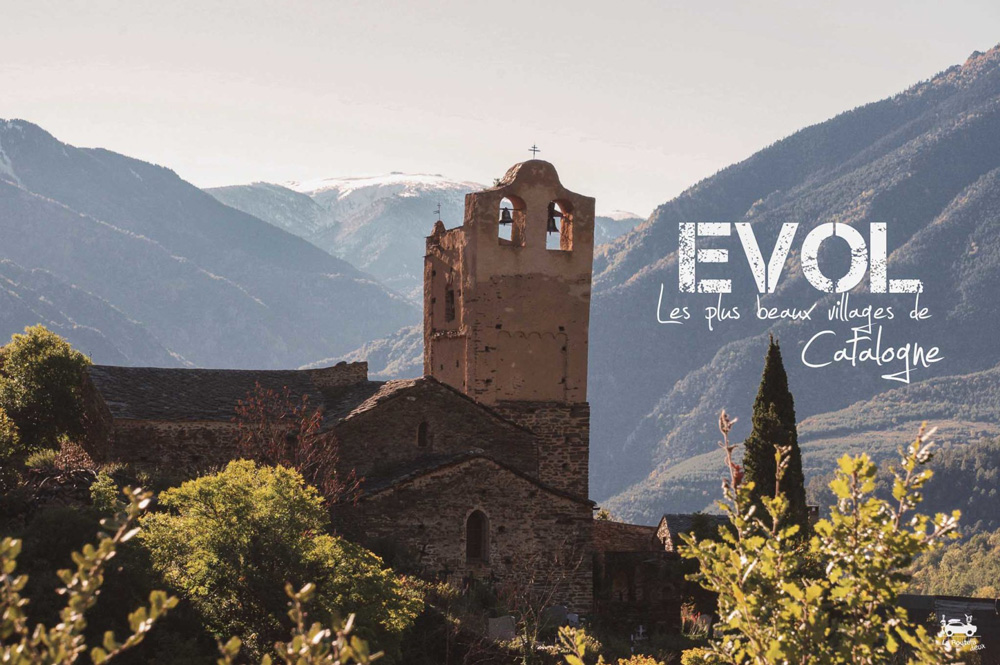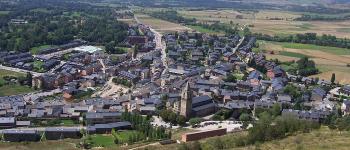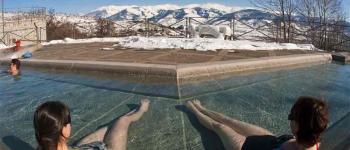
Attached to the village of Olette, the medieval hamlet of Évol is dominated by the ancient fortress of the Viscounts of So, dating from the 13th century and the bell tower of its Saint-André church, Romanesque, classified as a Historic Monument since 1943.
This village with a mountain character, with houses with schist walls and roofs of slate, whose size occupied the inhabitants in winter, is part of the four "Most Beautiful Villages of France" of the department of Pyrenees - Orientales since 2003...
A bit of history...
The valley was protected by an initial castle, of which there are no more traces, and which was probably built in wood as it was the use before the XIIth century. At the beginning of the 13th century, Catharism divided the feudal community. Bernat de So, who owned the lands of Evol, sided with the pope and organized an army, but he lost his lands in the struggle. When the Cathars were defeated, they were returned to him.
In 1260 his son Guillem received from King James the Conqueror the castle of Eus, the villages of Evol and Sahorre, half of Estavar and the castellany of Puyvalador. To mark the rise in power of his family, Guillem rebuilt his Evol castle, the one we know today.
His heir, Joan de So, built a second castle: La Bastide, which can still be seen on the banks of the Tet, a little further down the valley.
Évol became a commune during the French revolution, but as it had become too small it was attached to that of Olette in 1827.
The hamlet
Victim, like so many other communes, of the exodus, Évol, which had nearly 420 inhabitants in 1851, has seen its population decrease. Today, twenty-two residents keep the hamlet alive with its narrow, flowery streets, sometimes with steps, and its three washhouses, fed by a small canal that crosses the village, and restore the houses, respecting the buildings of the past.
The old village school has been transformed into an exhibition room dedicated in part to the writer Ludovic Massé, born in the village in 1900, and a small museum of early century farming tools.
Its bread ovens still overflowing from the walls testify to the rural life of the beginning of the century.
Another curiosity is the feudal castle, today in ruins and very little maintained. What is striking when observing this construction is the thinness of the walls, astonishing for an era troubled by numerous fights.
The hamlet also has two churches, dedicated to Saint-Etienne and Saint-André. The first one is located below the castle and the second one is in the village.
Classified as a Historic Monument since 1943, the church of Saint-André dates back to the 11th century as its rustic architecture and square bell tower prove. It was extensively modified in 1723 with the addition of the Chapel of Our Lady of the Rosary. This chapel now houses an important painted altarpiece dating from 1578-1580, the oldest in the region, and a 13th century Romanesque Virgin.
Adjacent to the church are the remains of a "Conjurador", a small building intended to ward off bad luck and, in particular, storms, lightning, hail or rain when they threaten. It used to be covered by the church, but the roof no longer exists and only the wall and the two arched openings remain, restored in 1950.
Astonishing...
Since 2003, Elisabeth Ghelfi, treasurer of the association "Évol la médiévale", who has lived in the village for 40 years, and the town hall have been doing everything to restore the village,
For a long time, the streets of Evol did not have names. The mayor chose to name them after local families; each one had its own nickname, and the anecdote that goes with it. A picturesque side that attracts tourists, since a few years.
Translated with www.DeepL.com/Translator
(free version)





